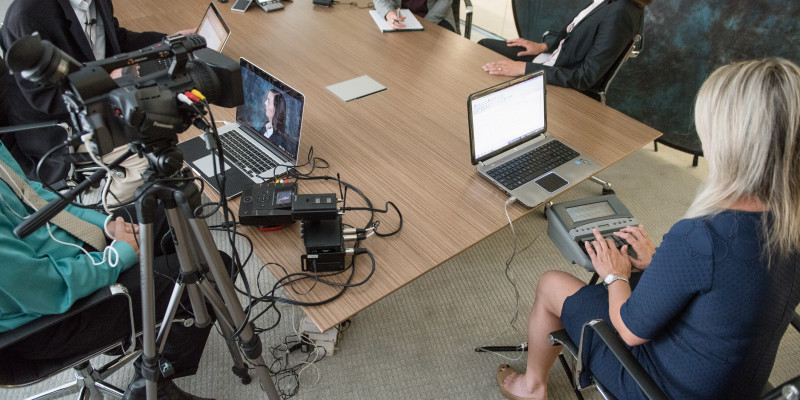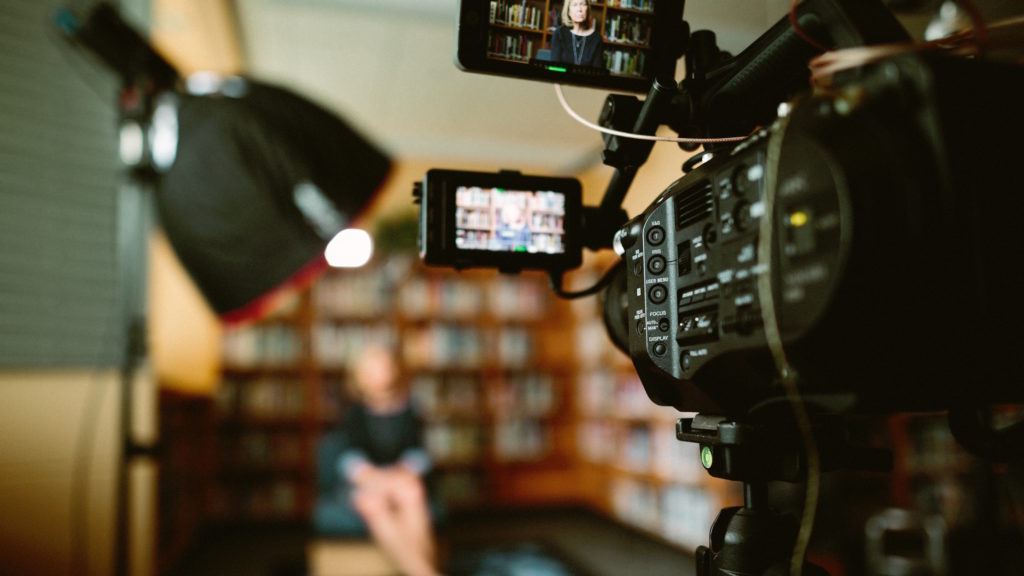The Effect of Legal Videography on the Success of Legal Trials
The Effect of Legal Videography on the Success of Legal Trials
Blog Article
Why Legal Videography Is Essential for Accurate Court Recordings
The function of legal videography in court settings can not be overstated, as it acts as a vital tool for preserving the integrity of court documents. By catching both verbal and non-verbal interaction, it enhances the clarity of witness testaments and shows the nuances of court communications. This thorough paperwork not just help in decreasing possible misunderstandings however additionally supports appellate reviews, therefore strengthening the judicial process. The effects of integrating lawful videography into standard court practices elevate important inquiries about its wider impact on the lawful system. What might these implications involve?
Importance of Visual Proof
In the realm of legal proceedings, the importance of visual evidence can not be overstated. Visual proof acts as a powerful tool in establishing truths, substantiating testimonies, and improving the total clearness of an instance. This type of proof, that includes pictures, videos, and diagrams, can give a tangible context that spoken summaries typically do not have, therefore using juries and courts a clearer understanding of the situations bordering a situation.
Furthermore, visual evidence help in the retention of info. Human cognition is naturally aesthetic, and people are much more likely to bear in mind and comprehend info offered in a visual style. In the court room, this can be essential, as engaging aesthetic proof can persuade viewpoints and enhance the story offered by lawful reps.
Additionally, the use of visual evidence can minimize misunderstandings and uncertainties that often occur from verbal exchanges. By giving a direct representation of occasions, aesthetic evidence helps to remove subjective analyses and promotes a more unbiased assessment of the truths. As a result, the integration of aesthetic evidence right into lawful procedures not only reinforces the stability of the judicial process but additionally improves the likelihood of attaining a just result.
Capturing Non-Verbal Hints
Utilizing innovative videography methods can considerably boost the capture of non-verbal cues throughout legal process. Non-verbal communication, including faces, body language, and eye call, plays a critical function in sharing emotions and intents that may not be explicitly mentioned in verbal testament. legal videography. Legal videography utilizes high-definition cams and tactical angles to make certain that these subtle signs are recorded with clearness and accuracy
The ability to assess non-verbal behavior can supply valuable context to declarations made throughout court sessions. A witness's reluctance or confidence can be analyzed through their pose or motions, potentially affecting the court's perception of integrity. The usage of close-up shots can aid focus on a speaker's expressions, permitting for a more nuanced understanding of the statement.
Moreover, incorporating multiple video camera angles can create a comprehensive view of communications, highlighting characteristics between events entailed. This multifaceted method not just enhances the accuracy of the court record yet also aids in preserving the integrity of the judicial process - legal videography. Eventually, catching non-verbal hints via legal videography fosters a richer, much more total depiction of court room proceedings

Enhancing Testimony Reliability
The integrity of statement can be significantly bolstered via using high-grade lawful videography. Video recordings work as an unbiased medium that catches not just the spoken words of witnesses but additionally the nuances of their shipment, consisting of tone, pacing, and emotional expressiveness. This multifaceted paperwork provides a clearer understanding of the witness's trustworthiness and intentions, which can be pivotal in lawful process.
Additionally, lawful videography reduces the possibility for misinterpretations that might arise from composed records alone. When jurors can observe a witness's disposition and body movement in combination with their testimony, they are much better equipped to evaluate the credibility and integrity of the evidence provided. This aesthetic context can enhance the testimonial narrative, making it much more engaging and credible.
Furthermore, the existence of a video clip recording can deter potential variances in testament. Witnesses might be more cautious in their go to my site statements when they understand they are being videotaped, leading to more precise and sincere accounts. On the page whole, high-quality legal videography enhances the stability of testament, making certain that the court has accessibility to a complete and truthful representation of the truths as communicated by the witnesses.
Sustaining Appeals and Reviews
Lawful videography plays a crucial role in supporting charms and evaluations by supplying a thorough aesthetic document of courtroom proceedings. This visual documentation captures not only the talked words of witnesses and lawyers yet additionally the subtleties of body movement, intonation, and court room characteristics. Such components can be crucial in understanding the context of testimonies and disagreements provided.
In the appellate procedure, where the emphasis gets on mistakes of regulation and step-by-step fairness, a video clip record can function as an important tool for appellate courts. It allows judges to examine the original trial context, guaranteeing that decisions are based on a full understanding of the proceedings. The capacity to aesthetically analyze the demeanor of witnesses or the communications in between events can reveal understandings that created records may ignore.

In addition, lawful videography can aid in making clear uncertainties in testaments or step-by-step rulings, thus strengthening the basis for a charm. By providing a reputable, objective account of what taken place in court, legal videography not just supports the honesty of the legal procedure but likewise empowers all celebrations involved to make educated choices regarding their instances.
Improving Court Room Processes
Enhancing court effectiveness, lawful videography improves procedures by giving immediate access to aesthetic documents of proceedings. This innovation permits courts, attorneys, and juries to review essential testament and evidence, ensuring that all parties have a clear understanding of the situation. By recording the this nuances of verbal and non-verbal communication, videography enriches the record, making it easier to understand the context and weight of testimonies.

Additionally, video clip recordings can help with remote participation in hearings, enabling higher flexibility in organizing and participation, which is specifically important in intricate situations involving several stakeholders.
Conclusion
To conclude, legal videography plays an essential role in making certain precise court recordings by giving vital aesthetic evidence that records both verbal and non-verbal interaction. This practice improves the integrity of statements, sustains appellate reviews, and simplifies courtroom procedures. By cultivating an extensive understanding of court room dynamics, legal videography inevitably contributes to a lot more fair judicial outcomes, strengthening the honesty of the legal system and promoting informed decision-making.
Report this page